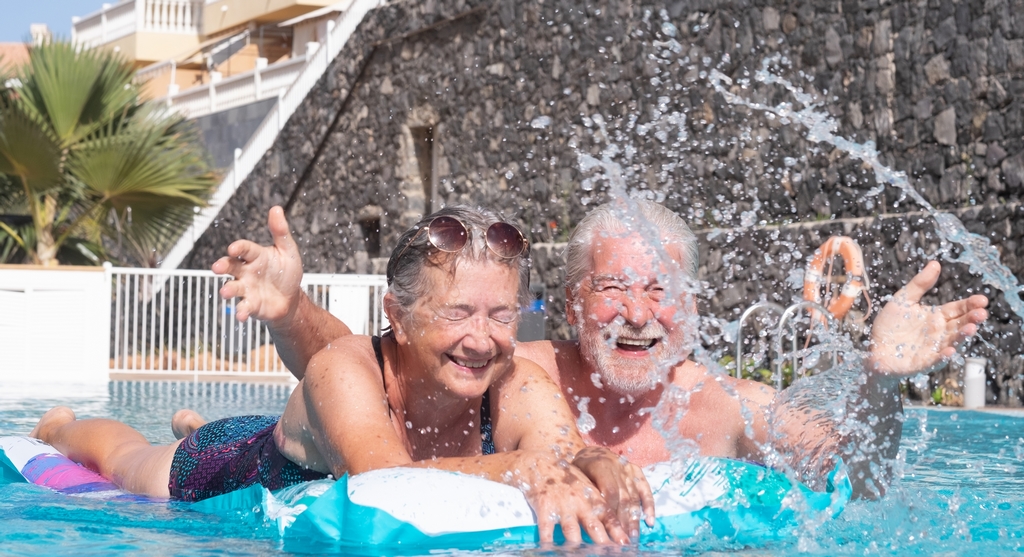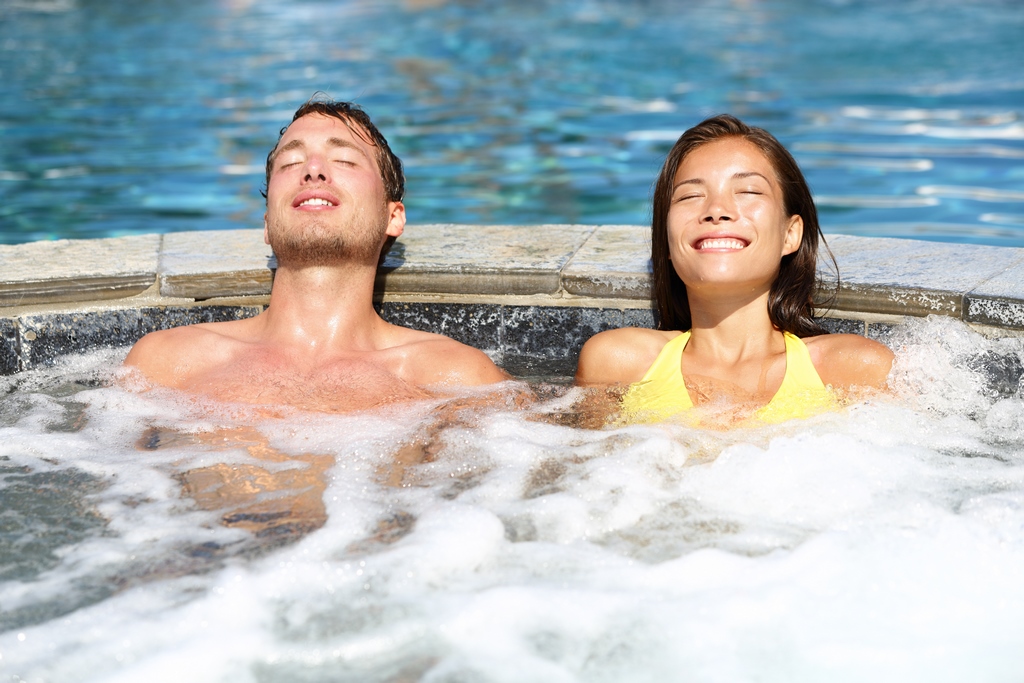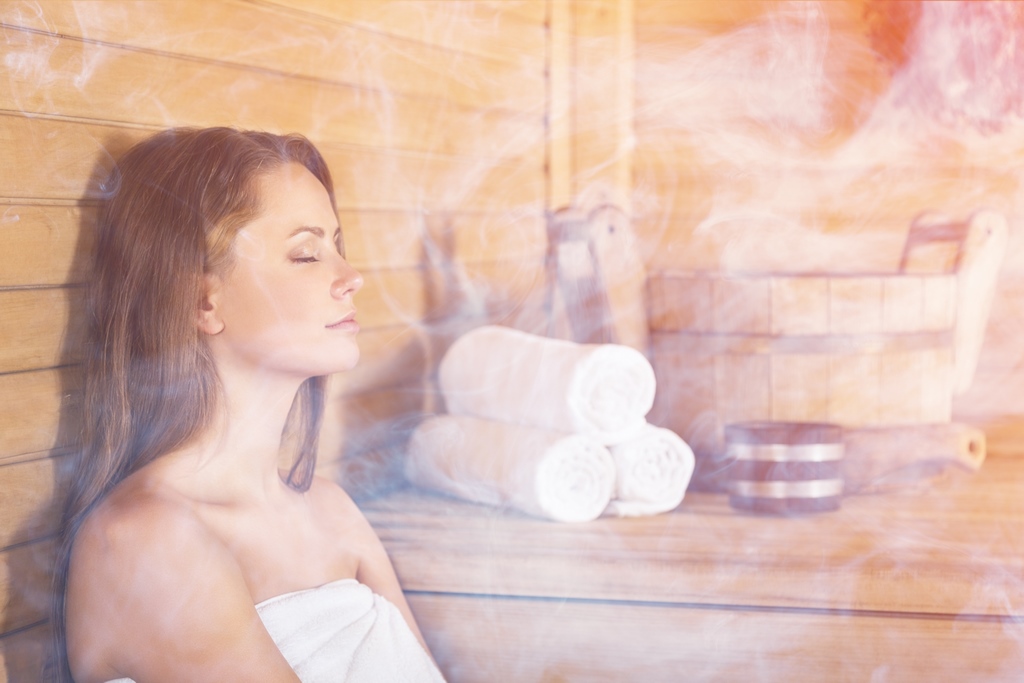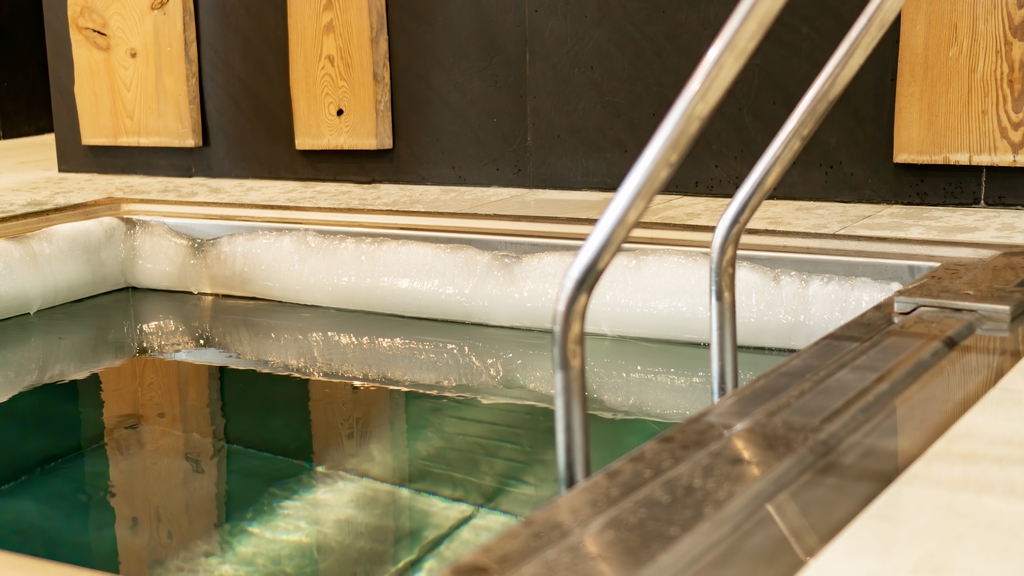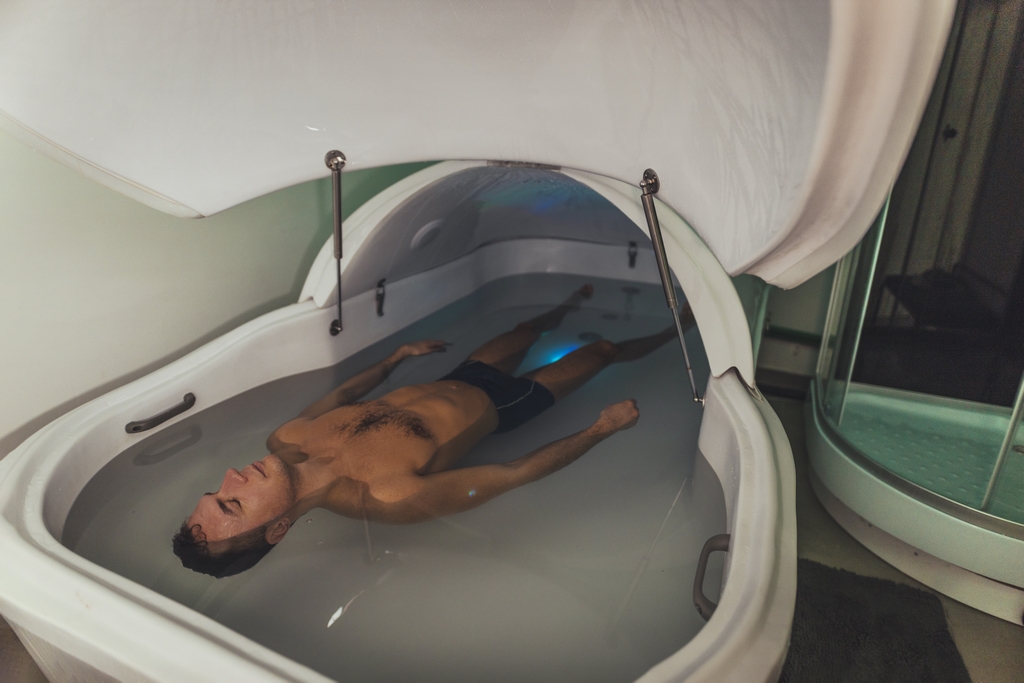Riding the Wellness Wave


As the desire for a healthy lifestyle increases – while at the same time our population ages – the demand for wellness facilities, products and services looks to dramatically expand in coming years. David J. Peterson believes this powerful global macro-trend spells opportunity.
By David J. Peterson
The Wellness Economy is booming, and it’s time the watershaping industry takes notice, and full advantage.
In 2023, the Global Wellness Institute forecasted that consumers will increase spending on wellness at an annual global rate of 8.6 percent. If that prediction holds, by the end of this 2024, spending will reach $6.3 trillion, $7.4 trillion in 2025, and $8.5 trillion in 2027, which is almost double its size in 2020.
That is a remarkable growth profile, and while watershaping interests are only a part of the enormous pie, you don’t have to be an economist to see that in a field that focuses on numerous types of watershapes in the form of pools, spas, cold plunges and other features, our industry stands to benefit tremendously by embracing the trend.
Here’s a breakdown of the march to wellness and the opportunities waiting for the watershaping industry.
WHAT IS WELLNESS?
First, it’s important to know what we mean when using the terms “health” and “wellness.” According to the preamble of World Health Organization’s Constitution, first published in 1948, “Health is a state of complete physical, mental and social well-being, and not merely an absence of disease or infirmity.”
Health is an objective that all people should embrace; the opposite of illness.
We know that wellness is multi-dimensional and holistic, encompassing the body, mind, spirit and our relationships with other people. Health changes over time and along a continuum, which is why our graying population plays an important role in advancing the importance of wellness.
Wellness is individual. We all have our own health issues and profile, but it is also at least partly environmental. The air we breathe, the food we eat, the stress of our lives, and numerous other factors can dramatically impact our health.
Wellness is also proactive; meaning we all need to take action across a range of issues, especially diet, rest, and exercise, to maximize our health.
The trend is driven by a handful of major factors. As mentioned just above, the aging population of unhealthy people is growing. Also, the increased cost of medical care and insurance and what some describe as failing medical systems have made preventive health measures (i.e. a healthy lifestyle) increasingly important to growing numbers of consumers.
Globalization and greater connection amongst people around the world in different locations and culture also play a role as we’re exposed to ideas and practices that work for other groups of people. (The growth of saunas in the U.S., which have been considered essential for generations in Scandinavia, is a prime example.)
INDUSTRY ON THE MOVE
Recent survey information probing pool, spa and other watershaping professionals reveals that many people in the industry are already thinking, and acting, in this direction. The numbers are impressive.
When asked if they plan on investing in wellness-related services, products and partnerships in 5-to-10 years, 89% said yes. In forecasting growth, 61% said they expect revenue growth from new wellness-related offerings to range from 10-to-40% growth. Zero respondents said they predict declining revenues.
When considering the trend from the perspective of(?) the spa/hot tub industry, 89% said they see wellness as very/extremely important. When asked if they’ve made changes in the last five years based on the wellness trend, 82% said they have, 95% said they expect the growing interesting in wellness to impact their business, and 83% said they use the term wellness when talking to clients or the media or in marketing materials.
Getting more specific, 72% said they were introducing new products and service, 63% indicated they plan on establishing new partnerships, 56% will be targeting new customer segments, 50% said they adjust their marketing material, 45% said they will train employees in wellness-related issues. Over 30% said they will repackage existing products and services, hire new employees, add new facilities and open new business ventures.
The wellness wave is clearly gaining size and momentum, and those companies taking up the charge will likely be ahead of the curve as the trend unfolds.
WATERSHAPE WELLNESS
From a wellness perspective, there is no better exercise than swimming. This is not new information. For an industry focused on delivering facilities for swimming and other forms of aquatic exercise, it only makes sense to understand and embrace the profound health benefits our products deliver.
First and foremost, swimming is an excellent cardiovascular exercise. Engaging in regular swimming sessions helps improve heart health by enhancing circulation and increasing the overall efficiency of the cardiovascular system. It aids in lowering blood pressure, reducing the risk of heart disease, and maintaining a healthy balance of cholesterol levels.
Swimming is also a low-impact exercise, making it perfect for people of all ages and fitness levels. The buoyancy of water reduces stress on joints and muscles, minimizing the risk of injuries often associated with high-impact, land-based activities. This makes swimming an ideal option for those with arthritis, joint issues, or people recovering from a variety of injuries.
The resistance of water provides a unique strength-training component to swimming. It works various muscle groups simultaneously, promoting muscle tone and strength development. Swimming exercises the entire body, contributing to a lean and toned physique. It also helps manage weight and improve flexibility. It rapidly burns calories, while providing a range of motion that improves flexibility and joint mobility.
The psychological benefits of swimming, or even simply being near water, are also considerable. As described in the seminal book “Blue Mind” by Wallace “J” Nichols, “Being close to water can make us not only happier, calmer and more emotionally healthy, but also more successful in life, relationships and even business.”
A number of pool-related features have been developed and grown in popularity in recent years that have upped the wellness ante of pool ownership.
Lazy river pools are a prime example. Once only found in commercial facilities, these elaborate swimming pools are now being installed in people’s homes with greater frequency. Lazy rivers enliven pools with moving current that adds to the fun, and opportunities for exercise by swimming or water-walking against the current.
Swim spas combine the workout of a current system with the benefits of hot water (more on that below.) And, in-pool exercise equipment has also increased in popularity, combining the benefits of treadmills and stationary bikes with the even resistance of water.
HOT WATER HEALTH
Much like swimming, hydrotherapy in hot tubs, mineral spas and other hot water venues is multi-dimensional, and potentially life altering.
Many people attest that relaxing in hot water during the evening helps them fall asleep later in the evening. It causes your body temperature to rise and when you get out and begin cooling down, your brain signals that it’s time for sleep.
Anxiety and stress are killers that can significantly reduce the quality of your life, and spas are arguably the magic bullet. Creating a personal space to escape the outside world can positively affect mental health. Spending as little as 30 minutes daily in your hot tub can combat daily stressors and release the tension by releasing feel-good endorphins that calm your system and bring about feelings of wellbeing.
Far from being purely psychological, hot water is great for your physical health. As you relax under the warm water, your blood vessels will expand, making it easier for your blood to move through your body. This helps oxygenate your system more effectively and will allow the blood to move to the muscles that require it the most.
Also, when submerging your body underwater, the weight your joints are under is reduced, allowing your body to rest and recover as you move with greater ease.
Hot tubs help alleviate pain throughout the body, including headache relief, back pain relief, and even reduced pain experienced in those who suffer from fibromyalgia and arthritis.
SAUNA SENSATIONS
In Finland there are more saunas than cars — an estimated 2 million-plus in a country of only 5 million people. While we might be a long way from that market threshold in the U.S., there is no question that saunas, both residential and commercial, are rapidly growing in popularity.
Again, the benefits start with the heart. The heat from saunas causes blood vessels to dilate, promoting better circulation, which can in turn support muscle recovery and overall cardiovascular health.
Saunas induce relaxation by triggering the release of endorphins, reducing stress and promoting a sense of well-being. Heat from the sauna helps relax muscles and alleviate tension, making it beneficial for those with sore muscles or muscle-related injuries. Sweating in a sauna helps to flush out toxins from the body through the skin, promoting detoxification and cleansing.
The increase in blood circulation and sweating can lead to clearer, healthier-looking skin by flushing out impurities and opening pores. Regular sauna use may help boost the immune system by increasing white blood cell production and activating the body’s natural defense mechanisms.
Saunas have been shown to provide relief from chronic pain conditions such as arthritis, fibromyalgia, and muscle soreness. The heat and steam in saunas can help open up airways, ease congestion, and promote clearer breathing for users with respiratory issues like asthma or bronchitis.
Saunas often serve as a gathering place where people can relax, unwind, and connect with each other, which can have positive effects on emotional and social well-being. There is even a growing trend for “event saunas” where groups of people are entertained by a host, often with music and controlled lighting.
TAKING THE COLD PLUNGE
On the opposite end of the experiential spectrum, cold-water immersion, also known as cold- water therapy or cold hydrotherapy, involves immersing oneself in frigid water for a short period of time.
This bold practice has been associated with several potential benefits, which is why at-home cold plunges and those at commercial facilities are becoming far more commonplace.
Cold-water immersion can help reduce inflammation, which may aid in recovery from intense physical activity or injuries. The cold temperature constricts blood vessels, reducing blood flow to the affected area and thereby reducing swelling and inflammation.
Athletes often use cold-water immersion as part of their recovery routine. The cold water helps to reduce muscle soreness and fatigue after strenuous exercise by constricting blood vessels and decreasing metabolic activity, which can help speed up the removal of metabolic waste products from muscles.
While exposure to cold water initially constricts blood vessels, over time, repeated immersion can lead to improved circulation as the body adapts to the cold stress. This can enhance overall cardiovascular health and improve the efficiency of the circulatory system.
Cold-water exposure can induce a physiological stress response, leading to increased alertness and mental clarity. The shock of cold water triggers the body’s fight-or-flight response, releasing hormones such as adrenaline, which can sharpen focus and improve cognitive function. The release of endorphins, adrenaline, and other neurotransmitters in response to the cold may contribute to feelings of well-being and even relaxation.
Those taking the plunge should always prioritize safety and avoid prolonged exposure to extremely cold water, which is one of the big advantages of a small cold-plunge vessel used in the privacy of home.
FLOTATION THERARY
Unusual as it might seem to many people, tanks used for sensory deprivation therapy are becoming more popular, a rise that is largely due to the associated health benefits.
Sensory deprivation flotation, also known as floatation therapy or float-tank therapy, involves immersing oneself in a tank filled with a solution of water and epsom salt, creating a buoyant and quiet environment.
The weightlessness experienced in a float tank can help reduce stress by promoting relaxation and calming the nervous system. The absence of external stimuli allows the mind to enter a state of deep relaxation, facilitating stress reduction.
The buoyancy can alleviate pressure on joints and muscles, providing relief from pain and promoting healing. It can be particularly beneficial for people suffering from chronic pain conditions such as arthritis or fibromyalgia.
Floatation therapy has been reported to enhance sleep quality by promoting relaxation and reducing insomnia symptoms, leading to more restful and rejuvenating sleep.
Sensory deprivation can help clear the mind and enhance mental clarity by reducing distractions and promoting mindfulness. Many users report feeling more focused and mentally alert following a float session.
Athletes and others recovering from injuries may benefit from floatation therapy due to its ability to promote muscle recovery and accelerate the healing process. The weightlessness can help alleviate muscle tension and soreness, facilitating faster recovery times.
Some people find that floatation therapy enhances creativity and problem-solving abilities by providing a tranquil environment free from external distractions. The meditative state induced during a float session can stimulate creative thinking and foster innovative ideas.
Finally, the release of endorphins, often referred to as “feel-good” hormones, during a float session can contribute to a sense of euphoria and overall happiness.
HEALTH SPA DESIGN
All of these features are part of a much bigger picture. As an example of the broad impact of the wellness wave, nearly every day-spa, pampering spa or luxury spa facility that’s built these days includes some type of water experience, and often will include all of the above and other features such as steam baths and hydrotherapy loungers.
As a result, work with architects and developers on day-spa projects is becoming more common for watershape designers and builders, especially those with diverse expertise in these and other types of wellness-based aquatic systems. Very nearly all spas, health clubs and many physical therapy clinics need what our industry provides.
The trend lines are clear: focusing on wellness, and the benefits our products deliver, is a prescription for a thriving business. In these ways, and many more, watershapes and watershapers are perfectly poised to ride the rising wave of wellness, now and into the foreseeable future.
David J. Peterson, P.E, IWI, is co-founder of Watershape University and president of Watershape Consulting, Inc. a design and engineering firm based in Solana Beach, CA.
Opening graphic by Shawn Hempel | Shutterstock, first photo by Lucigerma | Shutterstock, second photo by DS Tkachuk | Shutterstock, third photo by Maridav | Shutterstock, fourth photo by Billion Photos | Shutterstock, fifth photo by nieriss | Shutterstock, bottom photo by MilanMarkovic78 | Shutterstock.










